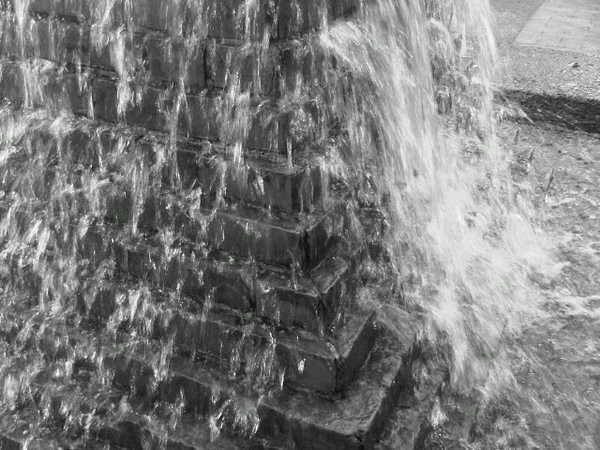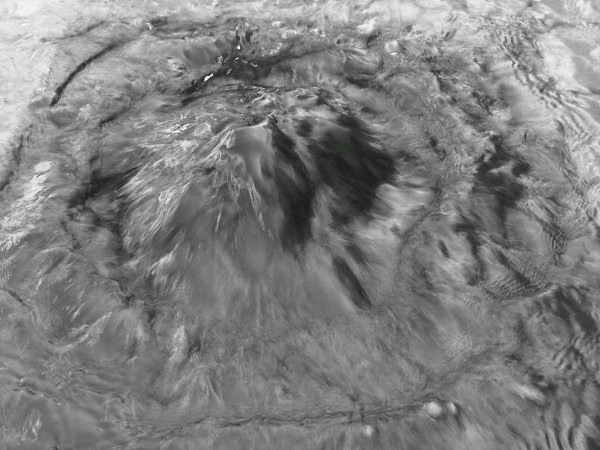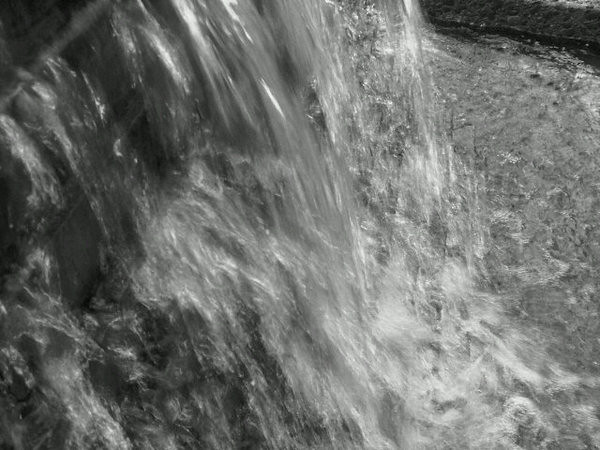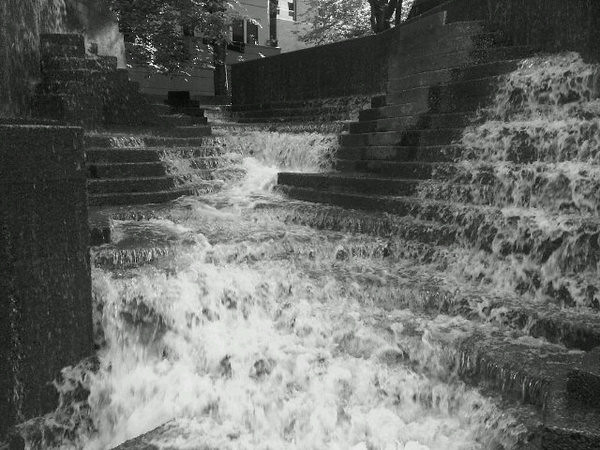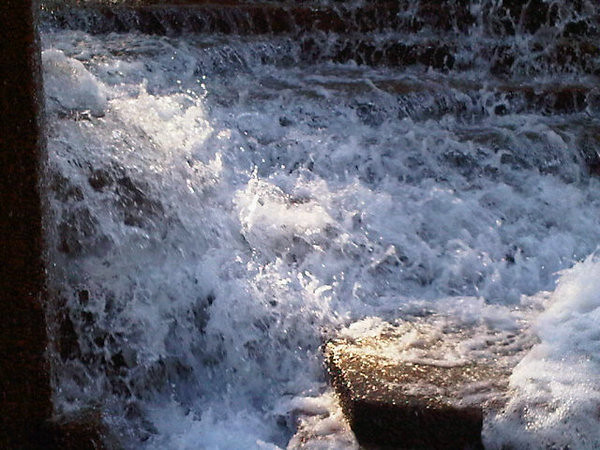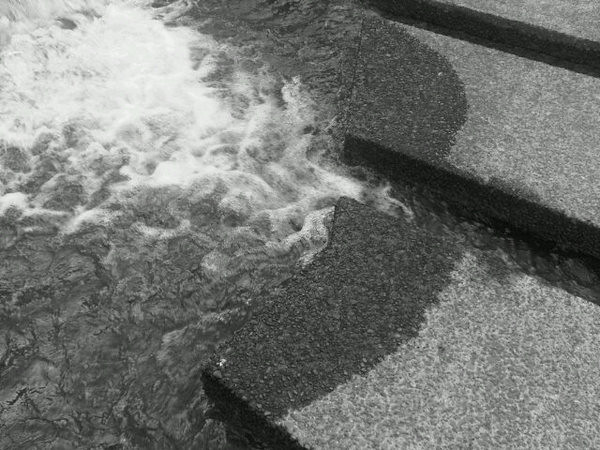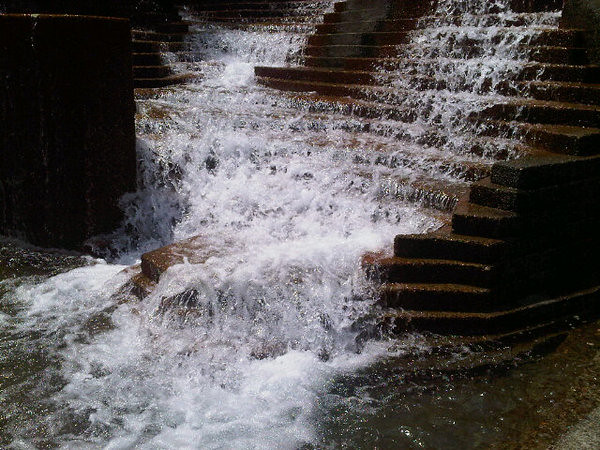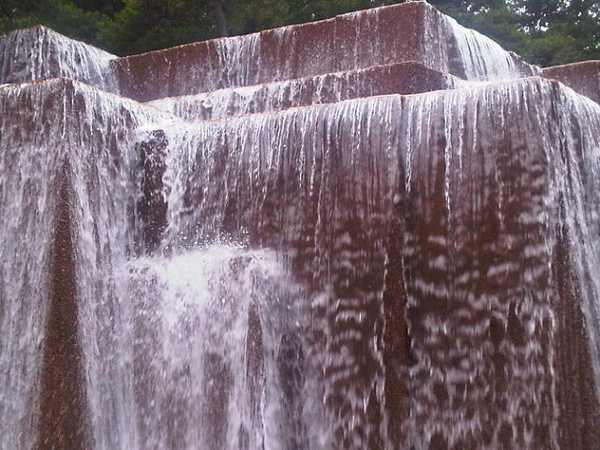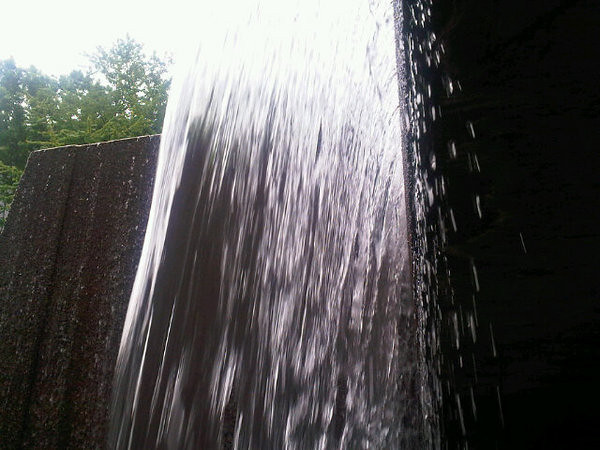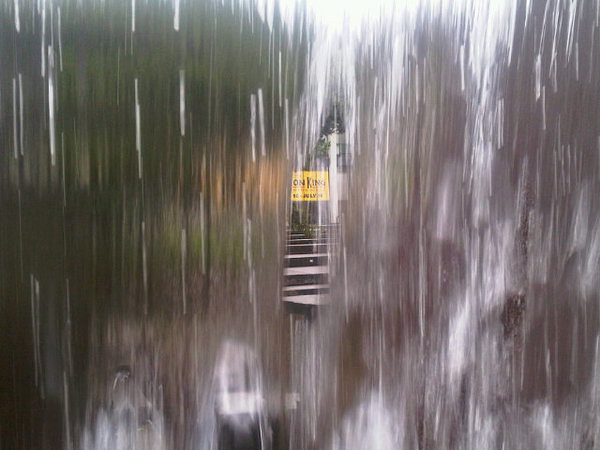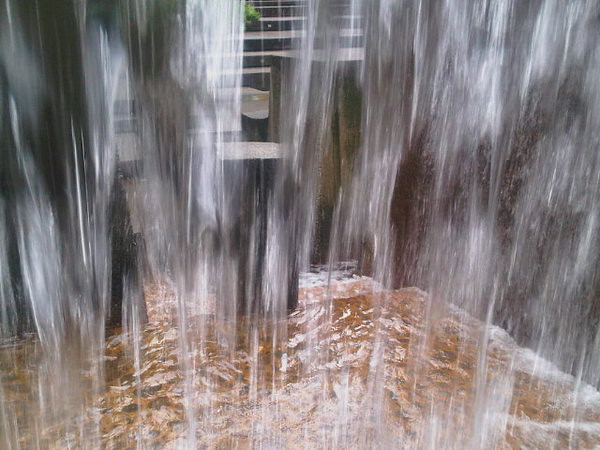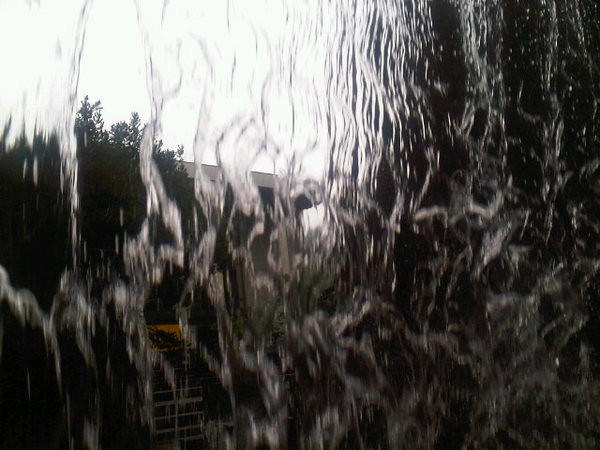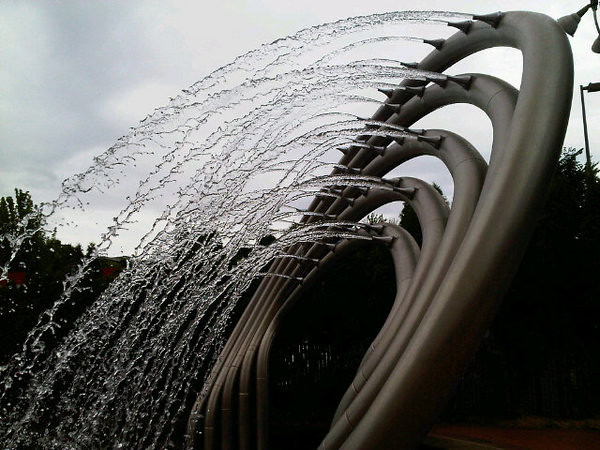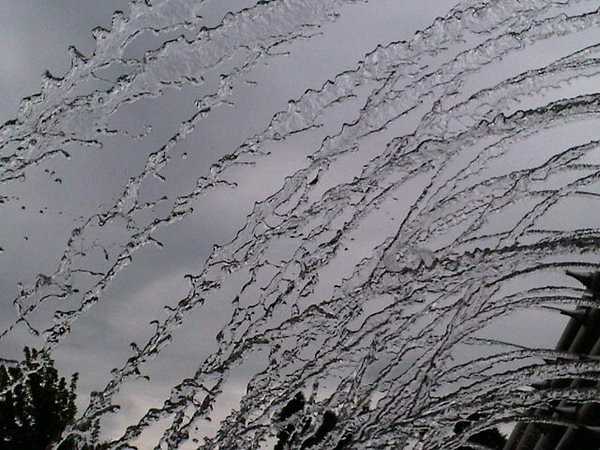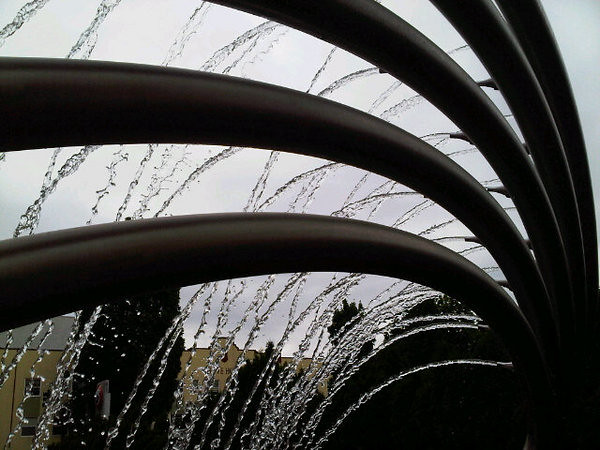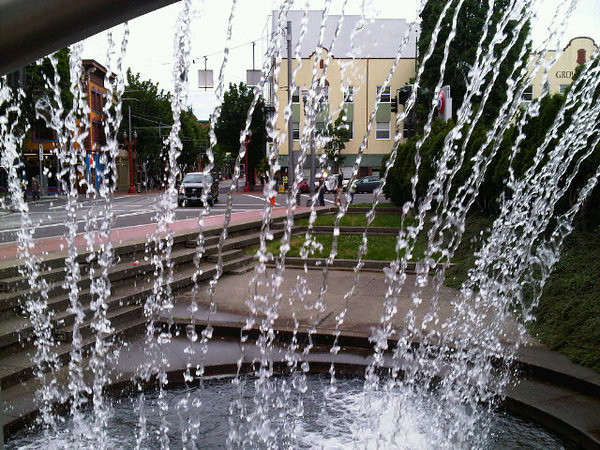Back in the naïve, low-tech days of yore (mid-2010), I'd just gotten a shiny new Blackberry phone, one with both a camera and a Twitter app, and I was pretty stoked about living in the future. The MAX Green Line was less than a year old then and I hadn't yet ridden it to the end at Clackamas Town Center, so one day I decided to make the trip and try this newfangled "live-Tweeting" thing I'd heard so much about. I even used the hashtag "#greenline", so, I guess, the entire world could follow my fearless expedition into Darkest Clackamas. Most of the photos I ended up with were of the new public art along the MAX line, although I wasn't really doing a public art blog project at the time. I think I was just trying to post at least one photo from each MAX station, without actually getting off the train, and the art seemed like a good way to tell the MAX stations apart.
In any case, I recently tracked these photos down in my old Twitpic account, and figured I could maybe reuse them here. None of them are that fabulous (though most are at least better than the one in this post), and if I was truly dedicated to this art project I really ought to go back, get off at each stop, and shoot some quality photos instead, and maybe hit the RAM Brewpub at the mall instead of grabbing tacos and tater tots at the food court like last time. But it's a rather long train ride just to get photos of things I already have photos of, and I'm positive it would be a long wait before I got around to it. Long story short, I'm going to go ahead and post with the photos I have, not with the ones I wish I had.
So this is one of the less successful photos of the series, from the SE Main St MAX station near Mall 205. If you look between the closing MAX doors and beyond the shelter you can see Tall and Fallen, the tall pillar with the jutting triangular bits. TriMet describes it:
The fan-shaped leaf of the ginkgo tree inspired Anne Storrs to create Tall and Fallen. Tall consists of seven abstracted ginkgo leaves cast in concrete and stacked inside four stainless steel poles. Fallen, constructed with the same leaves appearing singly or in pairs, suggests the gingko trees' fallen leaves.
I really do like this one, and I feel kind of bad my only photo of it is so terrible. The artist's web page about it has vastly better photos than mine, with a brief caption:
Inspired by the ancient ginkgo tree, this sculpture is created by stacking seven interlocking ginkgo-like concrete leaf forms in a stainless steel framework, 20’ x 3’ x 3’. More concrete ginkgo elements stacked singly or in pairs are found in the stations' landscape.
Looking around Storrs's website, I realized she also created Begin Again Corner, along the downtown Portland segment of the Green Line. I point this out because my photos in that post are actually pretty decent, in case you're wondering whether I ever take anything besides crappy camera phone shots.
If this was a professionally run blog on a platform less orphaned than Blogger, right about here is where you'd see a "Related Posts" or "You Might Also Enjoy" widget, with results probably generated by a simple keyword match, say on the word "ginkgo" for instance. In which case you'd see links to posts about ginkgo trees in the Plaza Blocks, and maybe the Ginkgo Petrified Forest in Eastern Washington, to pick two random examples with photos better than the one you see here. And if the algorithm looked at geotags, you might also get a link to Milestone P6, just north of Mall 205. Ok, there'd also be a "From Around The Web" section with links to crappy fad diets, celebrity news, anti-Obama rants, and bad investment advice, which is a big reason why I don't have a widget like that here.
